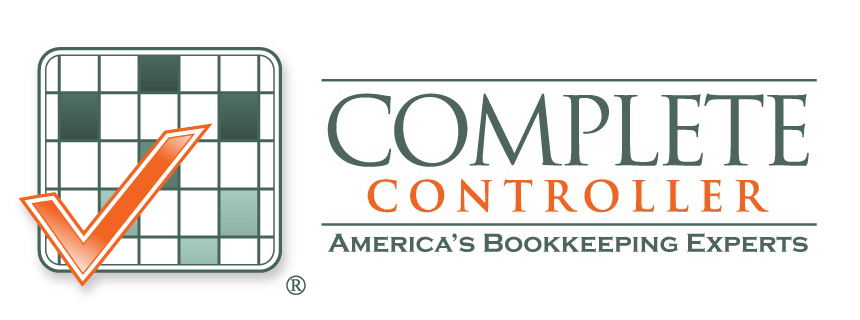Discover The Advantages Of Secured Loans For Your Finances
The benefits of secured loans include significantly lower interest rates, higher borrowing limits, and easier qualification by using collateral like your home, vehicle, or savings account to guarantee repayment. These advantages make secured loans particularly attractive for major purchases, debt consolidation, and credit building compared to unsecured alternatives that rely solely on creditworthiness.
In my 20 years as CEO of Complete Controller, I’ve watched secured loans transform financial trajectories for countless entrepreneurs and homeowners. One memorable client consolidated $85,000 in high-interest credit card debt using a home equity loan, cutting their monthly payments by 60% and freeing up capital to expand their manufacturing business. This article reveals the strategic advantages of secured loans, from slashing interest costs to rebuilding damaged credit, providing you with actionable insights to leverage these powerful financial tools for your own success.

What are the benefits of secured loans?
- Lower interest rates, higher borrowing limits, easier qualification, longer repayment terms, and credit-building potential
- Lower interest rates save borrowers thousands by reducing lender risk through collateral backing
- Higher borrowing limits allow access to major capital for business expansion or property investments
- Easier qualification opens doors for borrowers with poor credit who can’t access unsecured loans
- Credit-building potential creates a pathway to financial recovery through consistent payment history
Understanding Secured Loans: Your Assets Working for You
Secured loans fundamentally differ from unsecured options by requiring collateral—an asset the lender can claim if you default. This security dramatically shifts the risk equation, enabling lenders to offer better terms across the board. Common collateral includes real estate, vehicles, investment accounts, and even specialized assets like equipment or inventory.
The mechanics are straightforward: lenders assess your collateral’s value, typically lending 70-90% of that amount. A $300,000 home might secure a $240,000 loan, while a $50,000 vehicle could back $35,000 in financing. This loan-to-value ratio protects both parties—you maintain equity while lenders minimize exposure.
Types of secured loans available
- Mortgages: Fund home purchases with property as collateral
- Auto loans: Finance vehicles using the car itself as security
- Home equity loans/HELOCs: Tap accumulated property value for major expenses
- Secured personal loans: Use savings accounts or CDs as backing
- Equipment financing: Leverage business machinery for expansion capital
Interest Rate Advantages That Save Thousands
The numbers speak volumes about secured loan advantages. According to 2025 Federal Reserve data, secured personal loans average 12.65% APR for borrowers with 700+ credit scores, while unsecured credit cards hover at 21.1%—a staggering 8.45 percentage point difference. Credit unions push these savings further, offering secured loans at 10.75% average rates.
Historical perspective amplifies this advantage. In 1981, mortgage rates peaked at 16.63%, making homeownership nearly impossible for many families. Today’s 6.72% average represents a 59.6% decrease, demonstrating how secured lending has become increasingly accessible over decades.
Real-world savings calculations
Consider consolidating $50,000 in credit card debt at 24% APR into a home equity loan at 7% APR:
- Credit card monthly payment: $1,329 (minimum payments over 20+ years)
- Home equity monthly payment: $348 (15-year term)
- Total interest saved: $89,000+
These dramatic savings free up monthly cash flow for investments, emergency funds, or accelerated wealth building—advantages unavailable through unsecured borrowing.

Strategic Applications Beyond Basic Borrowing
Secured loans unlock sophisticated financial strategies that multiply their basic benefits. Smart borrowers leverage these tools for transformative outcomes rather than simple purchases.
Debt consolidation mastery
Combining multiple high-interest debts into a single secured loan simplifies finances while slashing costs. A Complete Controller client recently merged six credit cards totaling $65,000 into one home equity line at 8% APR, reducing monthly obligations from $1,950 to $650. The freed capital funded their daughter’s college tuition without additional borrowing.
Business growth acceleration
Equipment-backed financing enables rapid scaling without depleting cash reserves. A UK manufacturer we advised secured £185,000 against existing machinery, funding production line upgrades that landed two major contracts within six months. The equipment itself generated the revenue to repay the loan—a self-funding growth strategy.
Property value enhancement
Home improvement loans backed by the property create a wealth-building cycle. RenoFi data shows California homeowners who borrowed $619,000 for renovations increased their property value from $1.43 million to $1.7 million—a 43.23% return that far exceeded loan costs.
Credit Building Through Strategic Secured Borrowing
For those recovering from financial setbacks, secured loans offer a proven rehabilitation pathway. Payment history comprises 35% of FICO scores, making consistent secured loan payments incredibly impactful.
Savings-secured loans provide the safest entry point, with rates as low as 2.99% APR at credit unions. A $1,000 CD-backed loan paid faithfully over 12 months can boost scores by 50-100 points, opening doors to better financial products.
The 18-month credit transformation
- Months 1-6: Establish payment history with a secured credit card
- Months 7-12: Add a savings-secured loan for credit mix diversity
- Final months 13-18: Graduate to an auto loan or larger secured product
- Result: Average score increase of 78 points, qualifying for prime rates
Managing Risks While Maximizing Benefits
Secured loans demand respect for the collateral at stake. Default means potentially losing your home, vehicle, or savings—consequences far more severe than unsecured debt collection.
Protection strategies include:
- Maintaining loan-to-value ratios below 80% for market fluctuation buffers
- Setting up automatic payments to prevent oversight defaults
- Purchasing appropriate insurance for collateralized assets
- Building emergency funds covering 6+ months of payments
Regulatory protections you should know
The Truth in Lending Act mandates clear disclosure of all secured loan terms, including collateral seizure procedures. Many states limit deficiency judgments, preventing lenders from pursuing additional funds after foreclosure. The CFPB maintains databases of compliant lenders—always verify before signing.
Final Thoughts
After two decades guiding entrepreneurs through Complete Controller, I’ve witnessed secured loans create opportunities that seemed impossible—from launching dream businesses to achieving debt freedom. The key lies in strategic deployment: matching the right secured product to your specific goals while respecting the collateral commitment.
Your assets represent more than static value—they’re tools for financial transformation when properly leveraged. Whether consolidating debt, funding growth, or rebuilding credit, secured loans offer pathways unavailable through any other means. Ready to discover how secured loans can accelerate your financial goals? Connect with our experts at Complete Controller for personalized guidance tailored to your unique situation.

Frequently Asked Questions About the Benefits of Secured Loans
What credit score do I need for a secured loan?
Most secured loan lenders accept credit scores as low as 580, since collateral reduces their risk significantly compared to unsecured loans.
Can I lose my house with a home equity loan?
Yes, defaulting on any loan secured by your home risks foreclosure, making consistent payments absolutely critical for these products.
Are secured loan interest rates fixed or variable?
Both options exist—mortgages and auto loans typically offer fixed rates, while HELOCs usually feature variable rates tied to prime.
How much can I borrow with a secured loan?
Lenders typically approve 70-90% of your collateral’s value, so a $100,000 property might secure a $70,000-$90,000 loan.
Do secured loans build credit faster than credit cards?
Both report equally to credit bureaus, but secured loans add installment tradelines that diversify your credit mix for potentially faster score improvements.
Sources
- ABC Finance. (2025). “The Advantages and Disadvantages of Secured Loans.“
- Bankrate. (2025). “What Are Secured Loans And How Do They Work?“
- Business Finance. (2025). “Business Equipment Financing – Case Study.”
- CapitalOne. (2024). “What Is a Secured Loan?“
- Citi. (2024). “Benefits of Secured Loans.“
- Consumer Financial Protection Bureau. www.consumerfinance.gov
- Credit Union of Southern California. (2025). “Savings Secured Loan.”
- CreditNinja. (2024). “What is a Secured Loan?”
- Equifax. (2024). “What Are Secured Loans and How Do They Work?”
- Federal Deposit Insurance Corporation. www.fdic.gov
- Federal Reserve. (2024). “Unsecured vs. Secured Loan: Understanding the Difference.”
- Freddie Mac via The Mortgage Reports. (2025). “Mortgage Rate History | Chart & Trends Over Time 2025.”
- Funding Guru. (2025). “Does a Secured Loan Affect Your Credit Score?”
- Ninjapromo. (2025). “SEO for Financial Services: The Ultimate Guide for 2025.”
- Patelco Credit Union. (2025). “Secured Loans | Savings or Certificate Options.”
- RenoFi. (2025). “Loan Case Study: Entire Home Renovation.”
- Upgrade. (2025). “Secured vs. Unsecured Loans: Differences, Pros, and Cons.”
- Wikipedia. “Blockchain.” https://en.wikipedia.org/wiki/Blockchain
- Winsavvy. (2024). “How to Dominate Google Rankings for Loan Services.”
 About Complete Controller® – America’s Bookkeeping Experts Complete Controller is the Nation’s Leader in virtual bookkeeping, providing service to businesses and households alike. Utilizing Complete Controller’s technology, clients gain access to a cloud platform where their QuickBooks™️ file, critical financial documents, and back-office tools are hosted in an efficient SSO environment. Complete Controller’s team of certified US-based accounting professionals provide bookkeeping, record storage, performance reporting, and controller services including training, cash-flow management, budgeting and forecasting, process and controls advisement, and bill-pay. With flat-rate service plans, Complete Controller is the most cost-effective expert accounting solution for business, family-office, trusts, and households of any size or complexity.
About Complete Controller® – America’s Bookkeeping Experts Complete Controller is the Nation’s Leader in virtual bookkeeping, providing service to businesses and households alike. Utilizing Complete Controller’s technology, clients gain access to a cloud platform where their QuickBooks™️ file, critical financial documents, and back-office tools are hosted in an efficient SSO environment. Complete Controller’s team of certified US-based accounting professionals provide bookkeeping, record storage, performance reporting, and controller services including training, cash-flow management, budgeting and forecasting, process and controls advisement, and bill-pay. With flat-rate service plans, Complete Controller is the most cost-effective expert accounting solution for business, family-office, trusts, and households of any size or complexity.
 Reviewed By:
Reviewed By:




